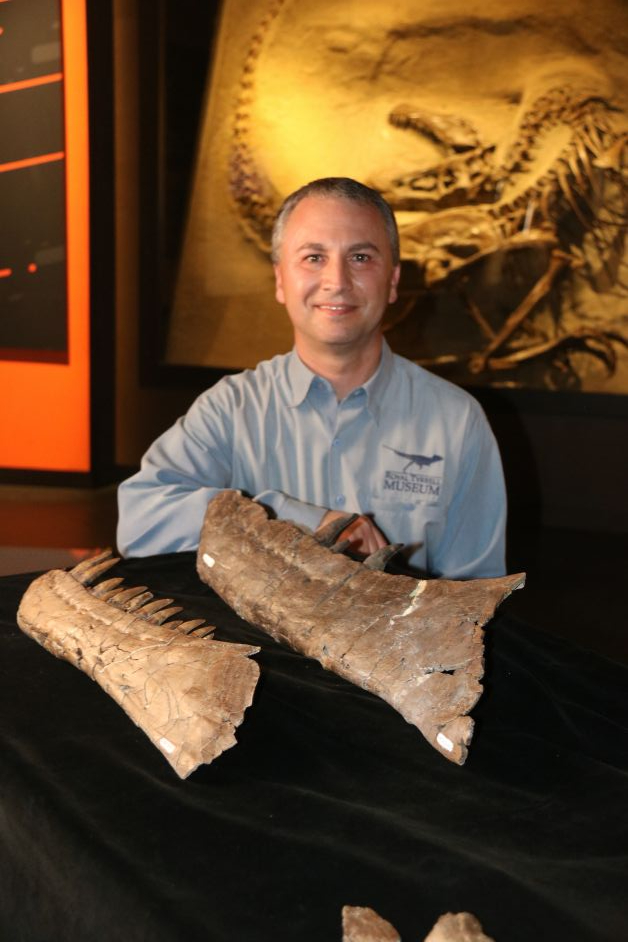
Researchers at the Royal Tyrrell Museum now have more understanding of the feeding behaviours of tyrannosaurs and how they changed throughout their lifetime.
A new study published in the Canadian Journal of Earth Scientists, led by Dr. François Therrien, Curator of Dinosaur Palaeoecology at the Royal Tyrrell Museum, studied the jawbones, from Albertosaurus sarcophagus and Gorgosaurus libratus. The study was comprehensive because of the Tyrrell’s extensive collection of specimens that represents all the age groups of tyrannosaurs.
“The tyrannosaurs are among the most famous and most popular dinosaur species and here in Alberta, we are lucky to have an amazing fossil record of tyrannosaurs. We have five different species known, but we also have so many fossils, that actually for some species, we have a full record of their entire lifespan; from the smallest individuals with a jaw length of about 30 centimetres, all the way to adults who have a skull length of a metre,” said Therrien. “Now with a full spectrum of fossils showing a full spectrum of growth that allows us to look at details of how the changes during life happened.”
Of the specimens studied, 23 belonged to Gorgosaurus libratus, and 12 belonged to Albertosaurus sarcophagus. By measuring various aspects of the jaws and teeth, the researchers were able to calculate the biomechanical properties of the jaws, providing insights into feeding adaptations, and enabling them to estimate bite force.
“We have known for years that baby or young tyrannosaurs were very different from their adult counterparts. The young ones were very lightly built, with long legs, probably runners, and fragile -- delicate. But then the adults were very big lumbering beasts, slow walking,” he explains.
The younger dinosaur jaws showed narrow blade-like teeth, ideal for slashing. However at about the age of 11, as they enter a sub-adult stage of their life, teeth growth became thicker and more robust. The change in teeth coincided with the increase of bite force.
According to a release, the researchers interpreted these lines of evidence as indicating a dietary change occurred as tyrannosaurs grew. Juvenile tyrannosaurs would have fed on small prey, easy to catch but still capable of putting up a fight against a small predator. Once individuals reached about 11 years of age, they shifted to a diet based largely on large herbivores, including hadrosaurs and ceratopsians, animals that required stronger teeth and a stronger bite to pierce through their thick skin, subdue them, and possibly crack bones.
“We knew there were two extremes, the juveniles were different from the adults, but we didn’t know how fast or at what time that transition from one type of predator to the other happened,” he said.


















